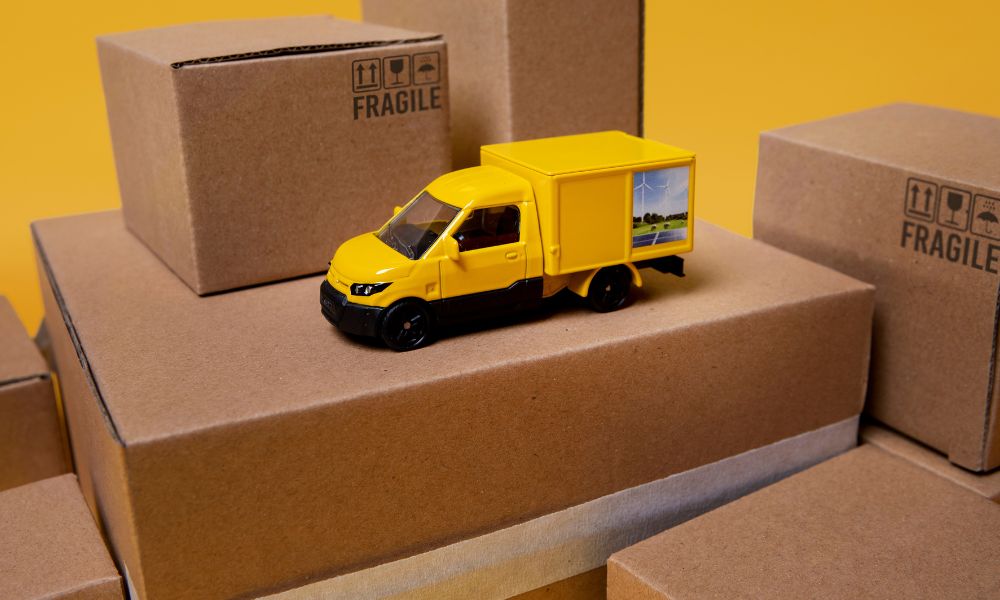Amazon’s fleet of warehouse robots is nothing short of impressive, but their rising numbers are a concerning turn for many. A new leaked report claims that Amazon hopes to replace workers with robots in large numbers in the coming years. While this isn’t a surprising update, the scale of the expected change has workers alarmed. Amazon’s automation plan for 2033 involves replacing 600,000 human workers with robots over the next 8 years.
The company’s non-human workforce already plays a significant role in day-to-day operations, making warehouses more efficient and safer by some metrics. Despite the benefits, however, the threat of automation, particularly at a time when AI technology is simultaneously infiltrating operations, has many concerned about the future of work and employment.

Amazon is expected to replace 600,000 workers with robots by 2033, automating 75% of its operations as a result. (Image: Freepik)
Amazon Aims to Replace Workers with Robots, Automating 75% of Its Operations
Leaked internal reports accessed by The New York Times show that Amazon’s robot workforce shift is gaining momentum, with the company hoping to automate at least 75% of its operations by 2033. This will involve Amazon replacing 600,000 workers with robots to manage a large chunk of the company’s operations.
The decision is motivated by a desire for greater efficiency, with numbers suggesting it could save 30 cents on each item that is processed and delivered. While the conversion looks small on paper, considering the scale of Amazon’s global operations and the money saved on salaries and benefits, the company could see its profit margins vastly improved. Morgan Stanley analyst Brian Nowak told CNBC that the annual savings for the company could add up to an impressive $4 billion by 2027.
Amazon has already made significant leaps in the realm of robotics, recently announcing that it has officially deployed over one million robots across its fulfillment and delivery networks. This number is no easy feat, and despite Amazon still retaining the title of one of the largest employers across the globe, its robotic workforce is as large as two-thirds of its human labor force. These numbers don’t sufficiently convey the scale of Amazon’s operations nor its robotic advancements.
Why Is the Robots’ Job Takeover at Amazon Concerning for Workers?
Amazon’s automation plan for 2033 isn’t merely about increasing automation but also about replacing workers with machinery, which implies that hundreds of thousands of workers could be left without work in the coming years. While many equate this to the industrial revolution and the changes that were brought on by technology, the scale at which advancements are approaching in every industry has many worried about the limited availability of jobs for the billions of job seekers.
Amazon’s worker replacement strategy is a particularly controversial one due to its scale, but the company isn’t alone in hoping for a fully automated fleet of workers running the businesses on stricter timelines, with no demands for benefits or pay raises. From Opendoor to Microsoft, most businesses that enjoy public attention have pushed for AI-based operations to take center stage. Some names like Swedish fintech giant Klarna have reversed their decision to go all in on AI, but for the most part, every industry has felt the arrival of this technology and the promise of automated operations.
Elon Musk has currently renewed efforts to convince Tesla shareholders to approve his $1 trillion pay package for leading the business. The errant CEO has backed these demands with claims that the large package is essential for him to control the “robot army” the company is hoping to set up in the form of its Optimus robots. While the business’ success is faltering, and the robots still have a long way to go in proving themselves capable of performing tasks, the situation does allude to an increased push for investments in robotics.
What Does Amazon’s Robot-Powered Workforce Shift Mean for Its Employees?
For now, Amazon hasn’t outlined any solid plans for layoffs or cutbacks on its human-based operations in relation to its master plan for robots. The business has already made cuts across its operations this year, with more layoffs rumored to be on their way within HR teams. Amazon is also leading the way for alternative delivery measures through its drone systems, and its most recent reveal of its Blue Jay robotic arm system and Project Eluna agentic AI model is further confirmation of its expansion of its robotics and AI capabilities.
To dull the blow of the news of Amazon robots replacing future jobs, the company announced a $1 billion investment in its employees last month, with hikes promised to those in the U.S. fulfillment and transportation division.
Additionally, the company just announced its Future Ready 2030 program this week, which involves a $2.5 billion commitment to the education of employees to prepare them for the future of work. The project aims to “help 100,000 employees gain new skills by 2025,” empowering both Amazon employees and the broader workforce to thrive in a rapidly changing labor market.”
The investment in employee well-being, training, and education is a welcome addition to the Amazon portfolio and could certainly help improve the prospects of thousands of workers. Unfortunately, it does give rise to questions regarding this “future” that workers are being prepared for, and just what the landscape of employment will look like in the years to come.
What do you think about Amazon’s goal to replace workers with robots? Will we see a rise in such reports in 2026? Share your thoughts with us. Subscribe to The HR Digest for more insights on workplace trends, layoffs, and what to expect with the advent of AI.





